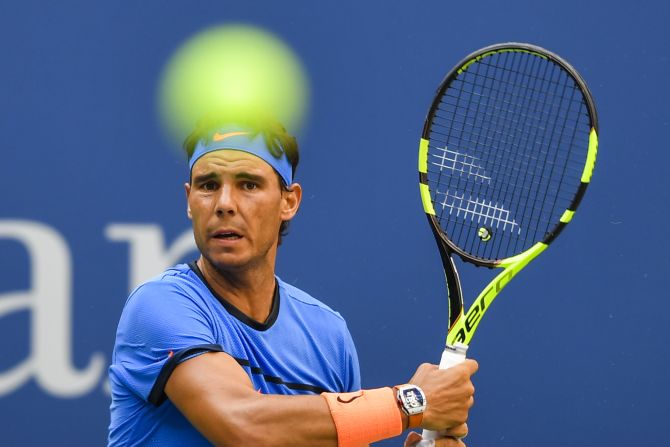
"Mallorca and Manacor is my life," says Rafa Nadal, who has recently collected titles on clay, in Barcelona, Madrid and Monte Carlo. Last year he enjoyed a successful Olympics but he's struggled with injury and form for much of the season.

Off the court Nadal is bringing one of his long-term goals into fruition.

The tennis star is launching an academy near his hometown of Manacor on the island of Mallorca.

It will be based in his new sports center, which provides gym facilities and a spa as well as accommodation for students, a cafe and an interactive games room.

It is laid out across 40,000 square meters of land outside Manacor.

More than 4,000 people attended the center's open day in September.

Nadal's uncle Toni, the academy's head coach, gave tips to kids on the open day.

The 14-time grand slam champion says he wants to leave a legacy in his hometown.

Nadal's loved ones attended the October 19 launch of the academy: (L-R) His partner Xica Perello, sister Maribel, mother Joana Maria and father Sebastian.

Nadal's image is a common sight around Manacor.

His name is famous on the island -- though this street in Manacor was not named after him.

Nadal poses next to a painting depicting himself during a ceremony in Palma where he received the title of "Favorite Son of Mallorca" in December 2014.

Nadal with friends during the ceremony in Palma.

Manacor, the second-largest town on the Spanish island with a population of around 40,000, is a thriving industrial center.

Manacor is known for its pottery, furniture and textiles.

It was dependent on agriculture until the introduction of a railway line in the late 1800s.

Its most famous church, Nostra Senyora dels Dolors, was built on a site that has housed religious temples since the Mallorcan conquest of King Jaume I in the 13th century.

Unlike the island's glitzy tourist resorts, Manacor is more reflective of everyday Spanish culture.

Nadal reportedly bought a €4 million ($4.4 million) coastal villa in nearby Porto Cristo in 2013.

The local marina is located in one of Porto Cristo's sheltered coves, and can hold more than 200 berths.

While inland Manacor is famous for its pearl refining industry, Porto Cristo still retains some of its fishing village heritage.

Its beaches are quieter than tourist meccas such as Palma and Magaluf on the other side of the island.

The capital Palma is a big attraction for package tourists.
